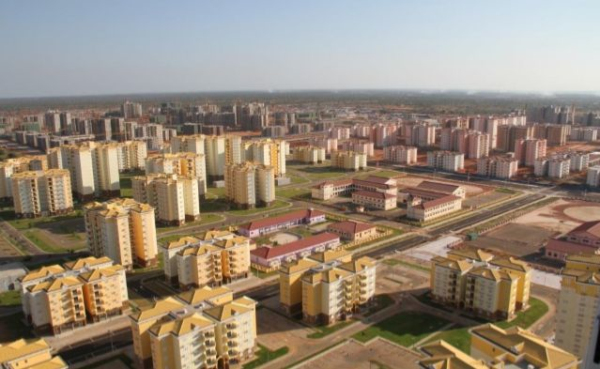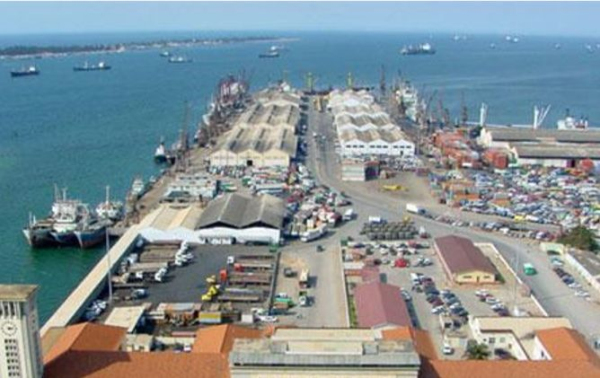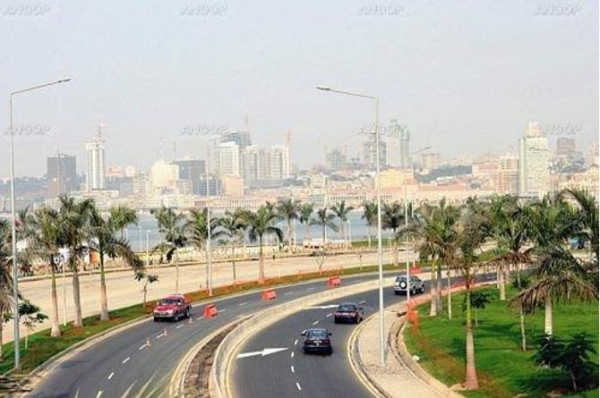Angola is located in the southwest of Africa, bordering Congo (Brazzaville) and Congo (Kinshasa) in the north, Zambia in the east and Namibia in the south. It is one of the important sea routes in central and southern Africa; It borders the Atlantic Ocean in the west, with a coastline of 1650 kilometers and a land area of 1246700 square kilometers. It has a very important strategic position. The northern part of Angola has a savanna climate, the southern part has a subtropical climate, and the high-altitude area has a temperate climate.
The official language of Angola is Portuguese. There are 42 national languages in Angola, and the main national languages are Wenbandu (central and southern regions), Jinbandu (Luanda and inland regions), Kikungo (northern regions) and Bantu. In Angola, 49% of the population believes in Roman Catholicism, 13% in Protestantism and most of the rest in primitive religion.

Angola is rich in oil, natural gas and mineral resources.
Oil and natural gas: Angola's proven recoverable oil reserves are expected to be 13 billion barrels in 2018, making it the second largest oil producer in Africa and the third largest source of oil imports for China. In 2018, the daily output of crude oil was 1.47 million barrels. Natural gas reserves reached 7 trillion cubic meters.
Mineral resources: Angola's main minerals include diamonds, iron, phosphate, copper, manganese, lead, tin, zinc, tungsten, gold, quartz, marble and granite. Diamonds are Angola's second largest mineral resources, with a total reserve of about 1 billion carats, of which 50% are gem diamonds. Angola is one of the major diamond producing countries in the world. In 2018, the diamond output was 8409000 carats, generating revenue of 1.224 billion US dollars. Angola is a major export product other than oil. Iron ore reserves are 1.7 billion tons, manganese ore reserves are nearly 100 million tons, and phosphate ore reserves are 200 million tons.
Angola gold mine:BUCO-ZAU GOLD MINE: APPROXIMATELY 104.31 KG
Situated in Cabinda province, Angola’s Buco-Zau Mine sold 15 kilograms of gold from its secondary deposit, marking the country’s first gold mining revival in almost half a century.

The Mining Law, approved by Law No. 31/11 of 23 September 2011, is the cornerstone of Angola's mining legal framework. This regulation sets out the overall activities of exploration, evaluation, reconnaissance, mining and the sale of mineral resources.
Generally, exploration activities require investors to negotiate and conclude mineral investment contracts ("MICs") with MRPs or national concessionaires. However, for mineral resources used for civil buildings and public works, mineral licenses are sufficient. For manual activities, only minerals are required.
Now, focusing on industrial mining, the Mining Law adopts the single contract model (MC) to grant mineral rights to the entire mineral process (exploration, evaluation, exploration, mining and sales) from the beginning. The Mining Law divides mineral activities into three stages (investigation and exploration stage, evaluation stage and mining stage). Although it clearly indicates the rules covering these three stages, rights and obligations will be known in the relevant middle-income countries.
MIC can further participate in spontaneous application or public bidding. Public bidding may or may not be mandatory, depending on the geological potential of the area concerned and/or the eligibility to be mined as strategic or non strategic minerals. According to the economic relevance of minerals, the government can classify minerals into strategic categories for strategic purposes or other specific technical mining. Other relevant criteria that make minerals strategically qualified include their scarcity, impact on economic development, demand for international markets, impact on employment creation by mining, technical relevance, and impact of mining on balance of payments and trade.
Diamonds, gold and radioactive minerals are clearly qualified as strategic minerals in the Mining Law. The Presidential Decree No. 231/16 of December 8, 2016 classified rare metals and rare earth elements as strategic minerals.
If there is no mandatory public bidding procedure, mineral rights can be granted to applicants who can demonstrate the technical and financial capabilities required to carry out related mineral activities on a first come, first served basis.
Although all mineral rights (from exploration to sales) have been formally granted through MC from the very beginning, the holders of mineral rights must obtain exploration rights (issued with the approval of MC), followed by mining rights, so that the transition of related mineral activities from the geophysical stage to the mining stage depends on the submission and approval of technical, economic and financial feasibility studies (which must include environmental impact studies). After MMRP approves this study, a mining license shall be issued.
Mineral property rights may be granted to associations in any form permitted by law (i.e. joint ventures established or not), provided that the following requirements are met:
(a) Employees meet the conditions for obtaining mineral property rights as stipulated in the Mining Law;
(b) the associated companies are jointly and severally liable for their obligations to observe the mineral resources.
Generally, mining rights can be owned directly or indirectly by foreign entities. However, the latter needs to register a branch or establish a company in the country to carry out its business activities.
All of the above applies to both domestic and foreign applicants. However, certain rights can only be granted to Angolan citizens/entities, and foreign applicants may be required to participate in the activities of national entities. However, when establishing business partnerships, priority should be given to national partners or companies.

The Mining Law provides special rules for the taxation of mineral activities. The more important are the following:
a) The industrial tax rate for specific industries is 25% (lower than the general industrial tax rate of 30%).
b) In order to determine the taxable income, many additional costs and expenses can be deducted, such as all authorized exploration, evaluation and reconnaissance expenses;
c) Surface fee (from $2 to $40 per square kilometer). If the geophysical prospecting period is extended, these figures will be doubled: and
d) Royalties. Special customs rules are also included in the Mining Law.
Royalties on the value of mineral resources shall be levied at the following rates: precious metal minerals and gemstones - 5% semi precious stones - 4% ・ non precious metal minerals 3%, semi industrial and handmade diamonds - 3%; Building materials for mining and other minerals - 2%.
The export of mineral products must be approved/cleared by the relevant agencies of the Ministry of Commerce and the National Service Department of the Customs, and the MMRP shall be notified.
Before exporting strategic minerals, strategic minerals must be evaluated and classified according to the situation or the nature of the minerals. For this purpose, an internationally renowned evaluation agency must be retained. Producers have the right to use their own evaluators at all stages of the evaluation process.
All minerals extracted and exported from Angola must have certificates of origin issued by the relevant authorities.
In principle, the export of legally extracted and processed minerals does not need to pay customs duties or other customs fees, except for stamp duty and personal expenses of customs officers. However, the export of unprocessed mineral resources is subject to a tariff of 5% of its market value.

Favorable factors:
1. The labor force is sufficient and the domestic market has great potential. Angola has a population of nearly 30 million, and the age structure of the population is young. 65% of the population is under the age of 24, the average age of the population is 20.6 years, and the working age population accounts for 88.19% of the total population.
2. The natural resources are abundant.
3. The government actively promotes industrial diversification, transformation and upgrading.
Adverse factors:
1. The corruption of the government has become one of the important reasons preventing enterprises from setting up business.
2. Influenced by the decline of crude oil price, the sluggish economic situation, tariff policy, poor infrastructure construction, poor public security environment, high survival costs, serious asymmetry of market information and other factors have also become the reasons that hinder investors from setting foot.